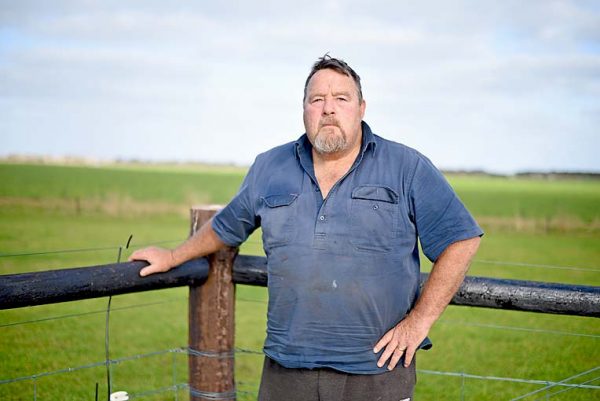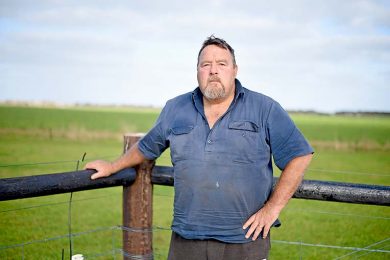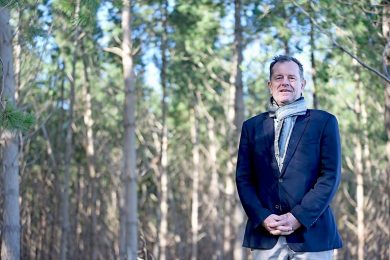

SPECIAL REPORT
THE issue of whether groundwater flowing out to the ocean in the Limestone Coast could be captured for industry has resurfaced.
Primary Industries and Regional Development Minister Tim Whetstone raised the issue during his recent visit to Mount Gambier following the forestry industry flagging the proposal.
According to Mr Whetstone, studies suggests 130 gigalitres of waters leaks out of the region into the ocean each year, which is the equivalent of around three Blue Lakes, or 52,000 Olympic-sized swimming pools.
The minister argued the need to potentially stop this “wasted water asset”.
“A lot of water runs off land into drains disappears into the ocean. How do we better utilise that and reduce the leakage out of the Green Triangle?” Mr Whetstone told The Border Watch.
“I would not say it was a crime, it is part of the eco-system. It is about how we stop that leakage out of the system.”
Mr Whetstone said there had been “many, many studies” into this issue.
“We need to see the sustainability into capturing some of that for commercial use.”
He said the forestry industry was looking at its capacity to grow more fibre, which was vital for the industry’s long term future.
To do that, we will need to have a much better understanding of what water prescription will mean to the Limestone Coast aquifer,” Mr Whetstone said.
“We have different rules across the border, we do not want to see investment go across into Victoria.”
FORESTRY SECTOR BACKS FLOATED PROPOSAL
Australian Forest Products Association South Australian branch manager Leon Rademeyer welcomed the minister’s comments.
“I am encouraged to see Mr Whetstone publicly support the Forest Industry Advisory Council SA’s recommendation to investigate ways to avoid groundwater waste and replenish this underground resource for the benefit of all in our community,” Mr Rademeyer said.
“Minister Whetstone agreed in his recent visit to Mount Gambier that groundwater, wasted through drains to the ocean, should be harnessed in some way to the benefit of all water users and the environment.”
Mr Rademeyer said this why industries were working proactively with all stakeholders, including government, to better understand how to sustainably manage the finite groundwater resource.
He said this was about building a plan for the future that would benefit the region and its communities.
DAIRY LEADER CALLS FOR PROTECTION
Allendale East dairy farmer and industry leader John Hunt said redirecting water flowing into the ocean – from both the confined and unconfined aquifers – could be worth exploring.
“There is a hell of a lot of water that rushes out to sea, but I am no scientist on these issues,” Mr Hunt said.
“How you could ever capture that water, I do not know.”
But he said a pressing issue was the need to protect wetlands in the district.
Mr Hunt – who is the SA Dairyfarmers’ Association president – said his personnel feelings were these issues needed to be explored and addressed.
“We need to do all we can to protect the wetlands,” the dairyfarmer said.
He said questions remained whether drainage had “gone too far”.
Mr Hunt revealed there had been meetings around wetland and drainage issues and how industry could respond.
In a positive sign, Mr Hunt said it appeared the unconfined aquifer was starting to recover in the district.
“We are starting to see water levels trending up,” he said.
Following changes to water management, he said irrigators were now using less water.
“The industry is doing its bit we all want to see these wetlands preserved,” Mr Hunt said.
DISTRICT MAYOR SAYS SCIENCE NEEDS TO STACK UP
Grant District Mayor Richard Sage said diverting groundwater was a complex issue and it would need to be backed by “clear science”.
He described the environment in the Port MacDonnell and Eight Mile Creek area as complex and delicate.
Mr Sage said all consequences of capturing water would need to be fully explored.
“Some of these drains connect into springs,” he said.
He said the area was drained during the period of soldier settlement so these swampy areas could be farmed.
Mr Sage also questioned the impact on the ocean environment – including fish – if these water flows were diverted.
“I know there was discussion some years ago about running water back into the Blue Lake because of its dropping water levels,” he said.









